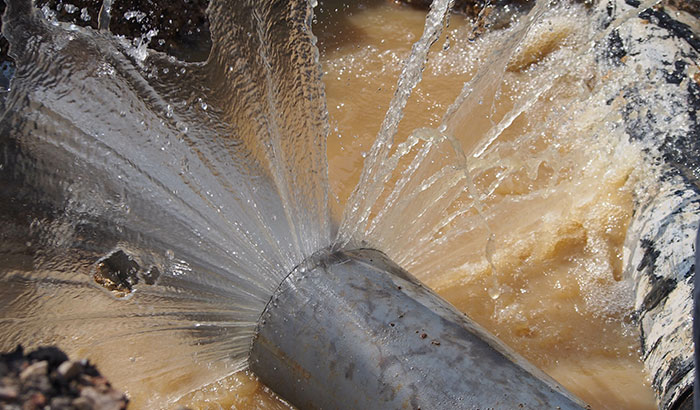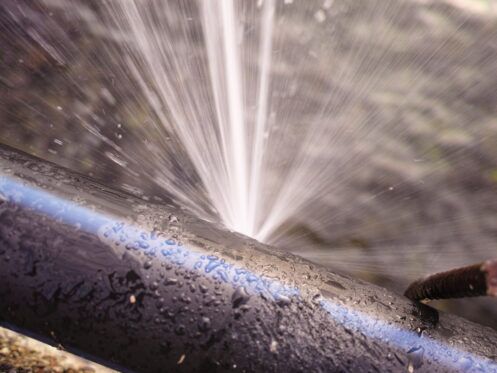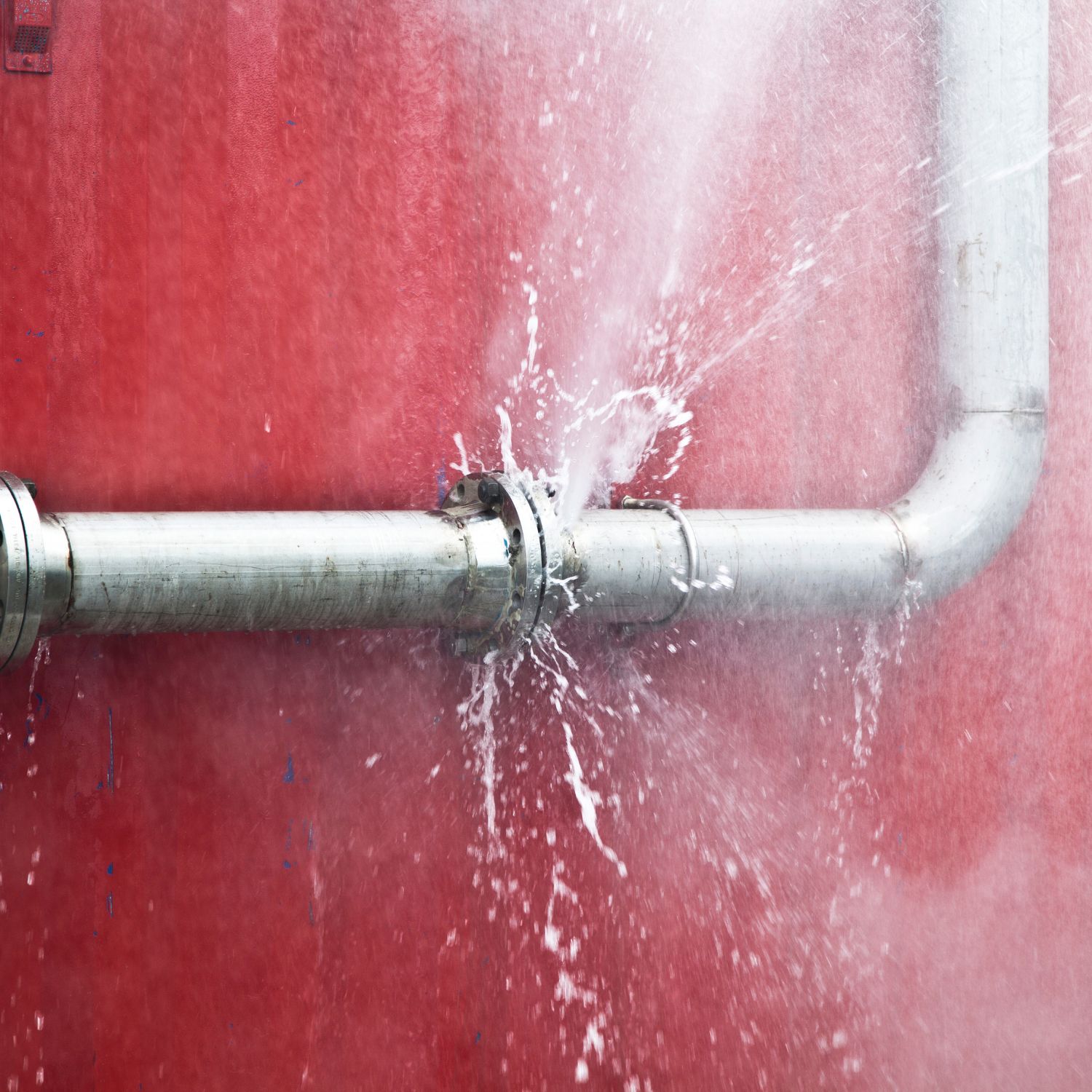How to Fix a Burst Pipe Yourself: A Step-by-Step Guide for Homeowners
How to Fix a Burst Pipe Yourself: A Step-by-Step Guide for Homeowners
Blog Article
What to Do When a Pipe Bursts: Immediate Tips for Homeowners
A pipeline ruptured can be a house owner's worst headache, resulting in considerable damage if not dealt with quickly. The prompt response is vital: initially, situate the resource of the leakage and closed off the major water shutoff to avoid more flooding. Following this, draining the pipes ends up being necessary to minimize additional issues.

Analyze the Situation
When a pipeline bursts, the initial step is to examine the situation promptly. This preliminary analysis is essential in figuring out the level of the damage and the prospective dangers entailed - burst pipe. Begin by identifying the source of the leak; this may entail evaluating the area around the burst pipeline for noticeable signs of water getaway. If the ruptured took place in a concealed area, such as within a wall surface or under a floor, try to find water discolorations or merging that may show the location.
Next, assess the surrounding atmosphere for dangers. Look for electrical cables that might be subjected to water, as this positions a substantial threat of electrocution. In addition, take note of any valuable items or furnishings that may be at threat of water damage. Comprehending the scale of the circumstance will certainly aid you prioritize your next actions efficiently.
Recording the damage through photos can additionally be useful, especially for insurance claims. Time is of the essence, as standing water can bring about mold and mildew growth and further architectural damage. By thoroughly assessing the scenario, you will be better prepared to take the essential steps to minimize further concerns emerging from the ruptured pipe.
Shut Off the Water
The immediate priority after recognizing a ruptured pipeline is to turn off the water to stop further flooding and damage. Locate the primary shut-off valve, generally found near the water meter, in the cellar, or on an outside wall. Turning this shutoff clockwise will stop the flow of water throughout your home, alleviating the risk of comprehensive water damage.
If you are incapable to discover the primary shut-off shutoff or if it is malfunctioning, you might need to shut off individual valves linked to the influenced pipe, if obtainable. Some homes likewise have secondary shutoffs for certain appliances, such as cleaning devices or dish washers.
It's a good idea to acquaint yourself with the area of these valves prior to an emergency takes place, as this expertise can save valuable time during a dilemma. In case the main shutoff is stuck or difficult to transform, do not force it; rather, consider looking for specialist assistance.
When the supply of water is shut down, take a minute to examine the situation additionally while preparing for the next actions, ensuring that your home is as safe and secure as possible from additional water breach.
Drain Pipes the Pipes
After shutting down the water, it is essential to drain pipes the pipelines to reduce any kind of continuing to be water that can bring about added damages. Begin by opening all taps in the home, beginning from the highest degree to the lowest. This process motivates the water to move out totally, permitting gravity to help in eliminating recurring water from the pipelines.

Be cautious when draining hot water, as it can create burns. Effectively draining the pipes is critical to stopping further problems and helps secure your home from added water damages during this demanding situation.
Get In Touch With a Specialist
In the wake of a ruptured pipeline, getting in touch with a professional plumber is important to make sure a thorough assessment and efficient fixings. Attempting to handle the situation without professional assistance can cause more damage and complications. A qualified plumber possesses the competence and specialized devices necessary to recognize the origin of the leak and address it efficiently.
When selecting a plumbing professional, prioritize those with a solid track record and pertinent experience in emergency situation plumbing services. Checking on the internet evaluations, getting references, and validating credentials can aid you make an educated option. It is suggested to call multiple professionals to contrast action times, approximated prices, and solution offerings.
When you have involved a plumbing, give them with as much information as feasible regarding the case, consisting of the area of the ruptured pipeline and the actions you have actually already taken. This info will help them in identifying the problem swiftly and accurately.
Document the Damage
When a plumbing professional has actually been called and the immediate concerns resolved, it is crucial to record the damage triggered by the burst pipeline. Begin by taking clear photos of the affected locations, focusing on noticeable damages to walls, floor covering, and furnishings.
Next, compile a detailed list of harmed things, including their approximate look at this website worth and any type of appropriate purchase info. This stock ought to encompass permanent components, individual valuables, and any architectural damage observed. Ideally, include the approximated expense of fixings based on professional analyses or previous quotes for comparable work.
In enhancement to written and visual documentation, keep documents of any kind of communications with your plumber and insurance company. By taking these actions, you will certainly be better prepared to navigate the aftermath of the incident.

Verdict
Immediate assessment of the circumstance, adhered to by closing off the major water supply, is essential. Draining the pipes and documenting the damage makes certain proper handling of the event for insurance coverage functions.
The prompt top priority after recognizing a burst pipe is to shut off the water supply to prevent further flooding and damages. Transforming this shutoff clockwise will certainly quit the circulation of Our site water throughout your home, mitigating the risk of extensive water damage.
After closing off the water supply, it is important to drain pipes the pipes to reduce any remaining water that could lead to added damages. For homes with a hot water heater, you must also drain the storage tank by attaching a hose pipe to the drain valve and routing the water into an appropriate container or outside.
Correctly draining pipes the pipes is crucial to protecting against additional issues and helps secure your home from extra water damages during this difficult circumstance.
Report this page